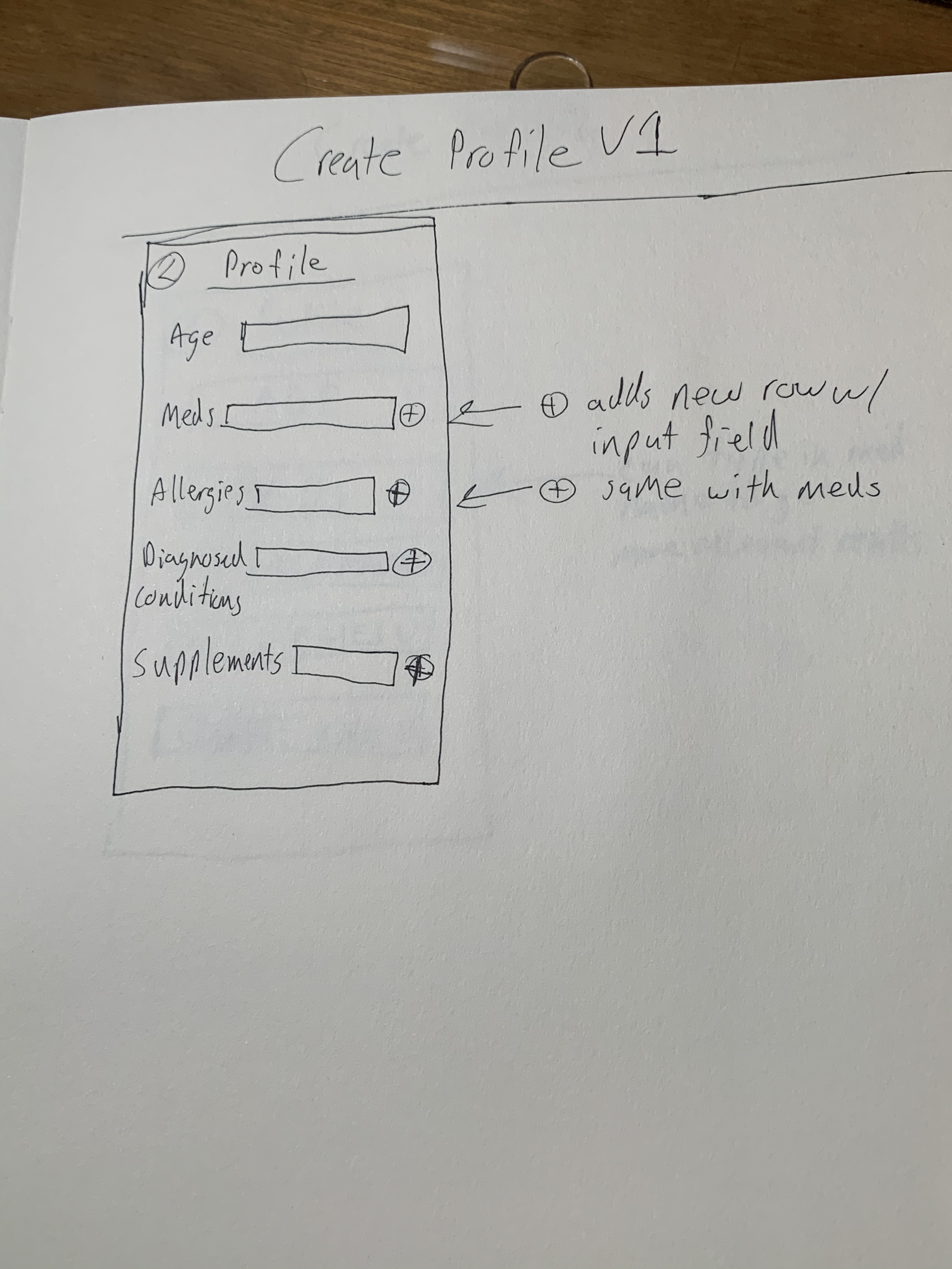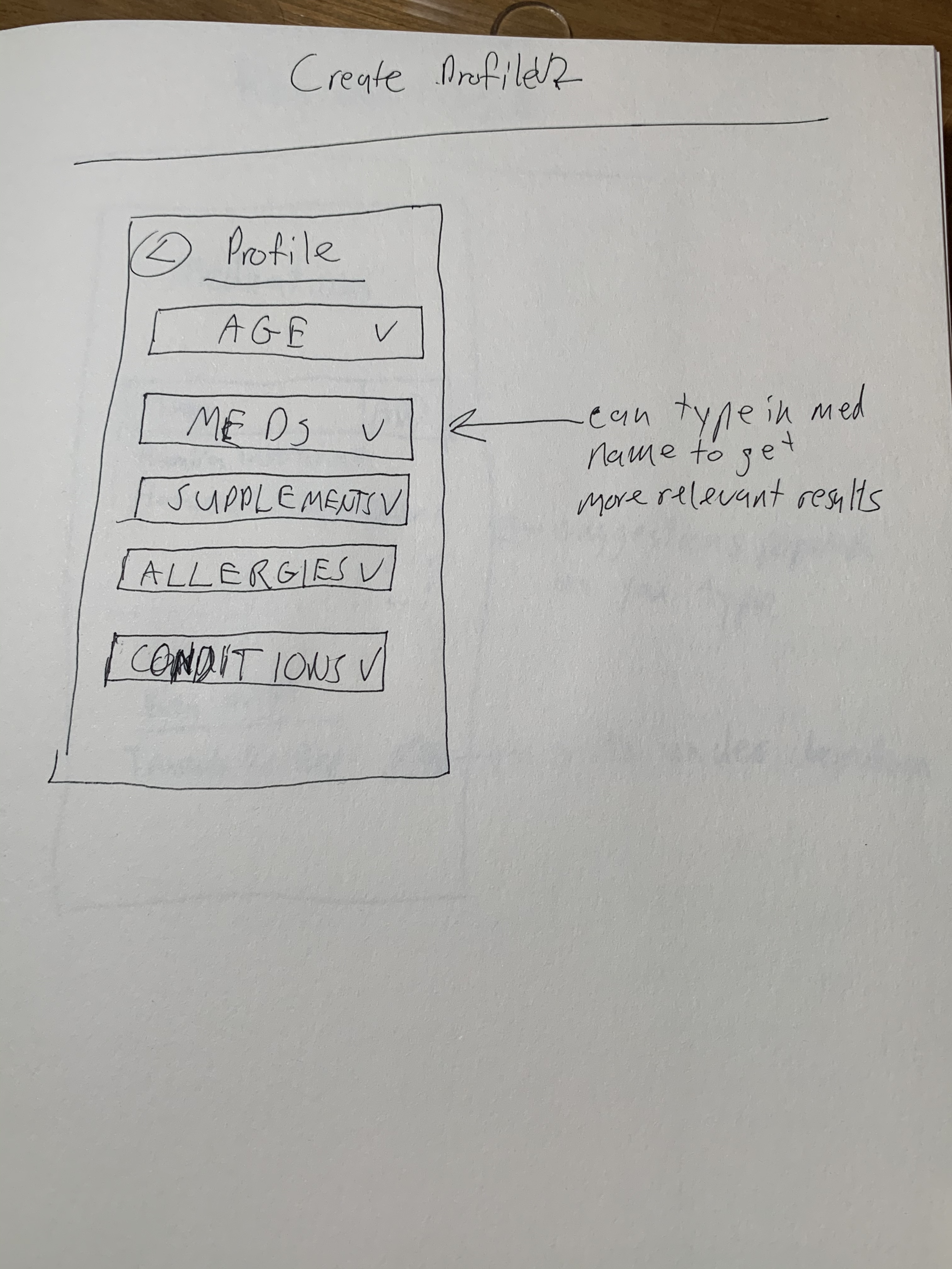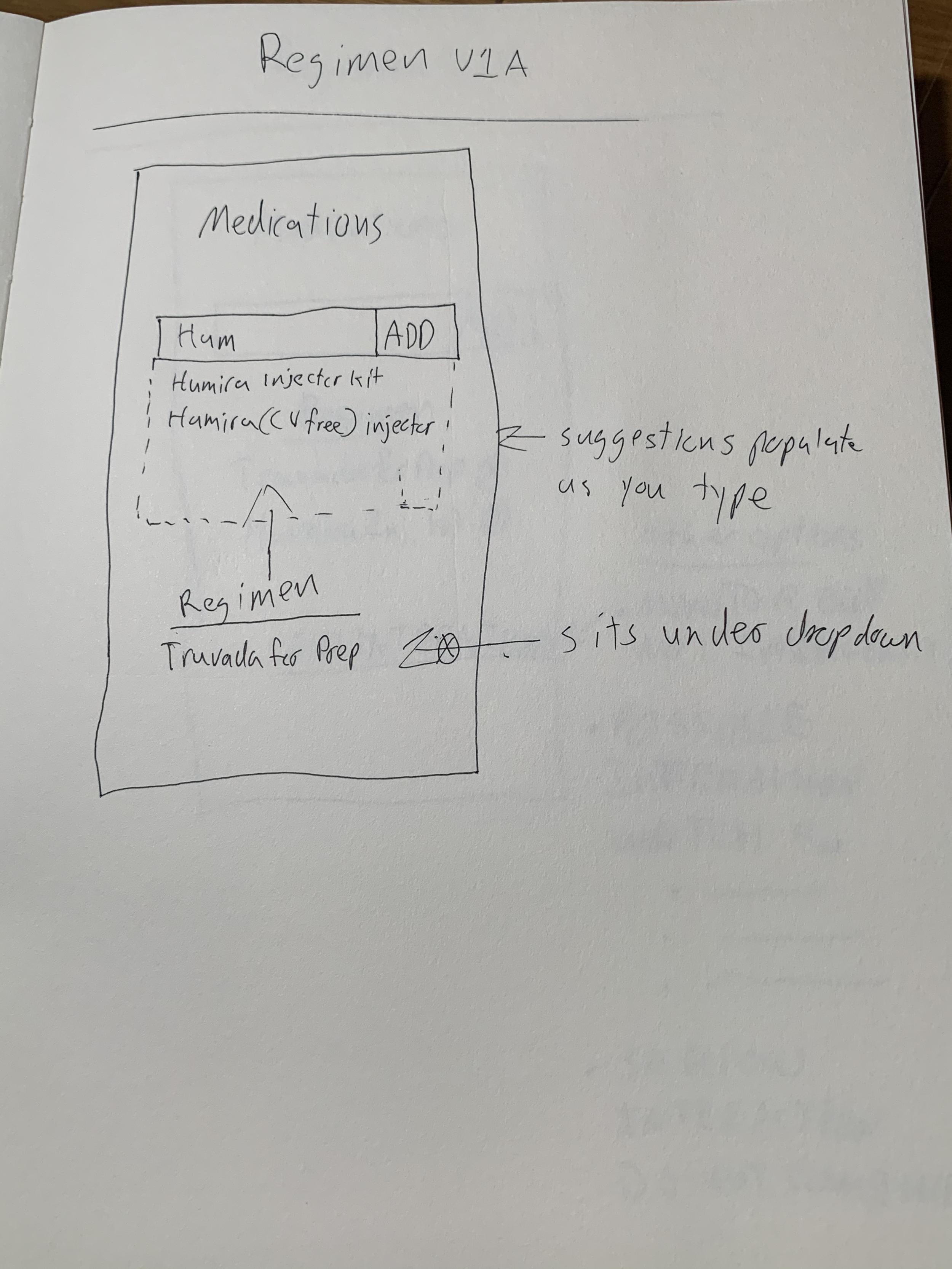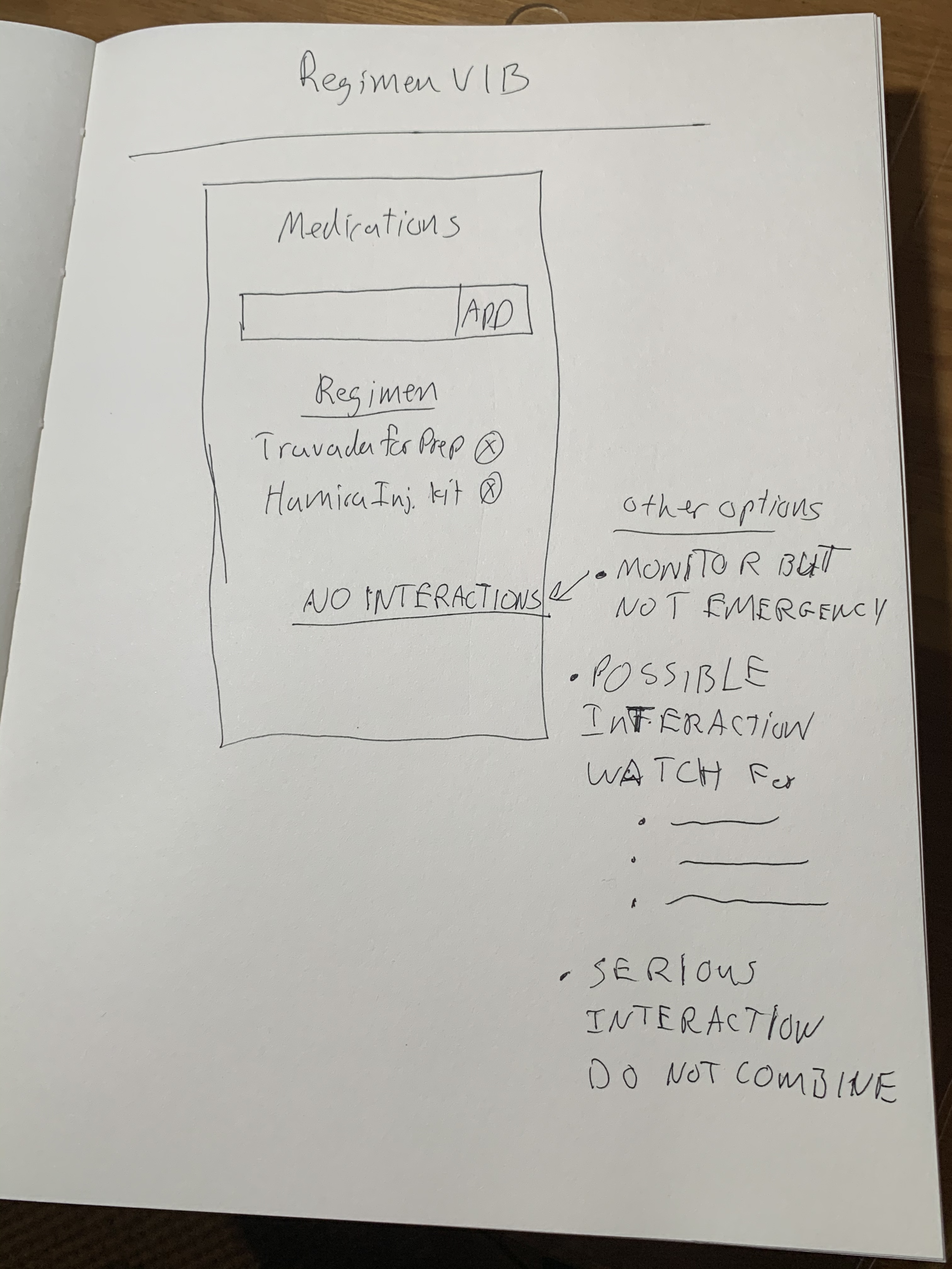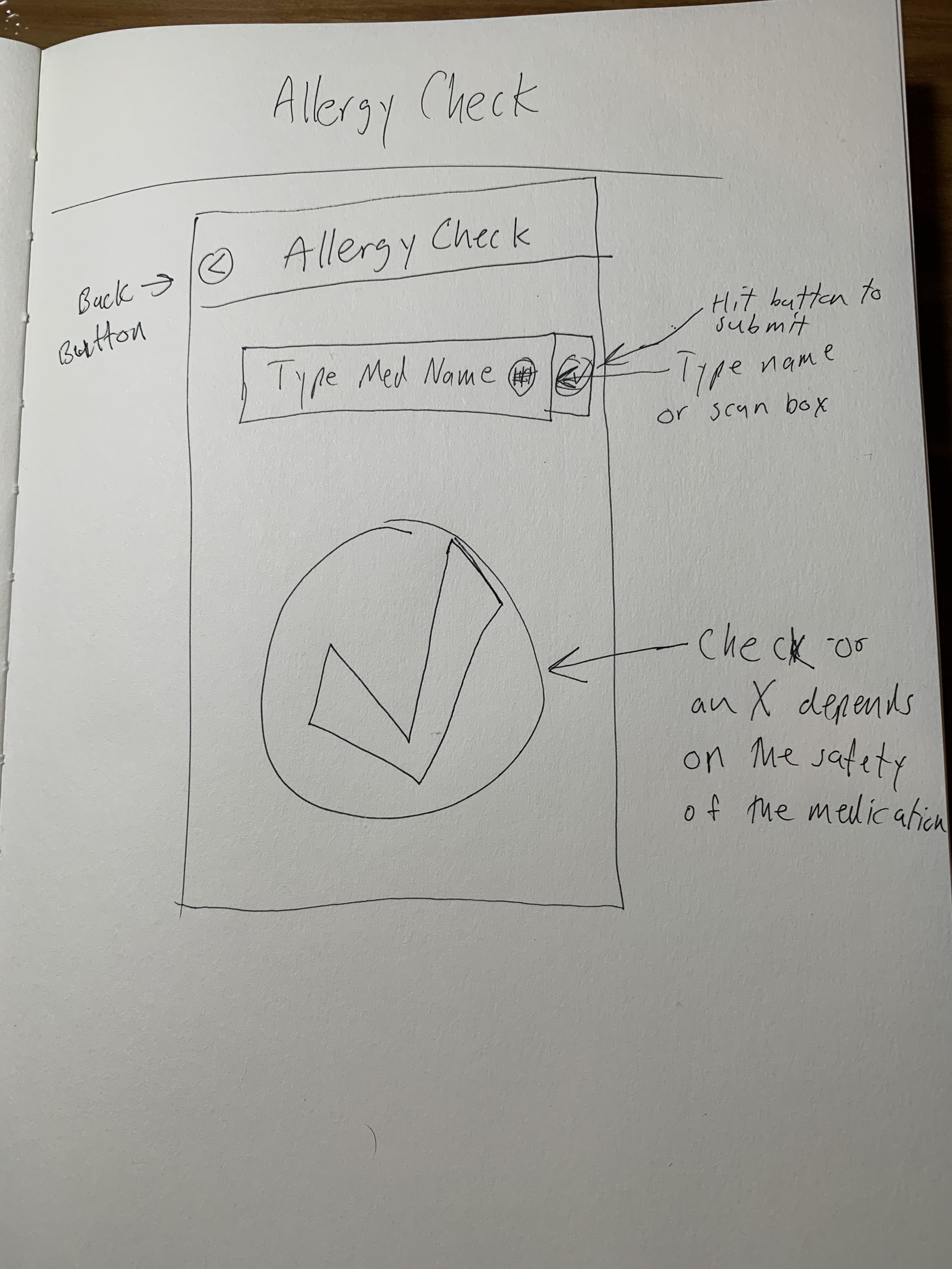Medication Safety Mobile App
Intro
Nearly half of all Americans take or have taken a prescription medication within the past month (CDC 2019). While many of these medications have come with instructions about what can and cannot be mixed with them. Good doctors will take pains to ensure that their patients are made aware of these restrictions. Unfortunately, many patients do not remember these directions or keep track of written instructions provided to them by their doctor. Many combinations of medications can have severe adverse health effects, e.g., decongestants such as Sudafed and blood pressure medications. Currently, there is not a truly centralized place where patients can check the potentially harmful interactions with the specific medications one is taking with over-the-counter drugs, alcohol, or recreational narcotics.
As many drug combinations have life or death consequences, it is imperative for patients to have a convenient, easy application that will alert them to the risks associated with specific drug combinations. Such a resource will save lives as well as reduce the burdens on the national healthcare system, benefitting both patients and healthcare providers.
Tools: Sketch, Photoshop, Invision, Zoom, SurveyMonkey
GOALS
Identify ways people currently keep themselves safe when taking prescription medication.
Identify pain points people have when determining the safety of over-the-counter medications and their possible interactions with prescription drugs.
Improve the way people interact with their health care providers with regard to their prescription medications.
Provide a clear and effective way for people to check for possible interactions with their current medication regimen.
Research
The first step of my research process was to gain an understanding of the current products that exist on the market. Multiple websites have drug interaction checkers but most have outdated interfaces or lack complex features such as checking interactions between multiple medications at once or checking interactions between medications and alcohol or narcotics. While medical professionals advise against using either alcohol and narcotics with prescription medications, it was important to create a product that addressed alcohol and recreational drug use in a judgment-free manner. Thus, a new key goal was to have a feature that combined the best elements of the existing landscape while providing a cleaner and more user-friendly interface.
Survey
This survey was conducted using SurveyMonkey and received over 150 responses from people taking prescription medications. The survey respondents reflected a broad representation of age, race, location, and income consistent with the demographics of the United States.
Below is a sampling of the responses that provided key insights into how I approached building out the product.
A majority of respondents said they had not been told to avoid certain kinds of medicines because of potentially harmful interactions. However, nearly a third said they had been told of potentially harmful interactions, clearly indicating that a sizeable portion of those taking prescription medication has to think about medication safety in ways not supported by the current landscape.
This answer provided surprising results in light of the responses to Question 5. Even though about 58% of respondents had not been told to avoid certain medications, roughly 2/3 of respondents indicated they were concerned about the potential risks of drug interactions.
The divided response here indicated that while a slight majority did not have trouble determining a medication’s safety at the pharmacy, there was still a sizeable portion of the respondents that could be helped by useful tools to assist them in feeling safe and secure in their healthcare decisions.
While people are not always confused about the safety of a drug or supplement taken with their current medication regimen, they do think they would use an app that would give them the tools to check the safety of drug interactions.
User Interviews
After the completion of the survey, I conducted several user interviews with people taking prescription medications. The medications taken by these people included blood pressure medication, statins, treatment for Crohn’s disease, and Truvada (an HIV prevention medication). Interview subjects were chosen to ensure there was a broad range of perspectives each of these people had different complications that required ensuring careful monitoring of their medication.
Key Takeaways:
Many people tend to feel more comfortable asking their pharmacists questions rather than their doctors.
Many people do not know how to make sure their regimen is completely safe and do not always have the tools or resources to check.
Many people keep some information from their doctors, including certain medications they are taking.
It can be difficult to determine from drug labels if an over-the-counter drug could pose a risk.
Pharmacist Interview
Once it became clear that people put a lot of trust in pharmacists, I set out to speak to one who is a leader in their field. I ended up speaking with Karl Gumper of Boston Children’s Hospital, the leading children’s hospital in the country. Karl confirmed was that many people are open with their pharmacist in ways they are not with their primary care doctor.
“You’d be surprised what people tell pharmacists.”
Karl stressed was that while many people do in fact have legitimate, full-blown allergies to medications or active ingredients within medications, most people are more likely to have sensitivities. This does not mean their symptoms are faked or underreported, but rather the medicines/ingredients will likely not induce a dangerous anaphylactic response as one of my interview subjects experienced.
He emphasized that he always wants people to ask questions and that pharmacists are always happy to answer them. His primary recommendation for a product dedicated to medication safety was that it be designed to facilitate dialogue between patients and their healthcare providers, both doctors, as well pharmacists.
Personas
DESIGN
I entered the design phase armed with the extensive information my research provided. I set out to build a mobile app that could be easily used within a pharmacy, allowing people to check a medication’s safety and have the tools to ask meaningful questions of their pharmacist.
Wireframe Sketches
Prototype
Moving into the final design I decided on a bright and inviting color scheme of blue and yellow. Blue is already widely used in healthcare applications because of its ability to create feelings of trust and loyalty with users. I used yellow as a secondary color because of its stimulating effect on users as well as its ability to induce cheer. Having users feel safe and happy within the app was a top priority.
The path linked below shows the initial setup within the app and a check for interactions with the medications entered during the setup.







